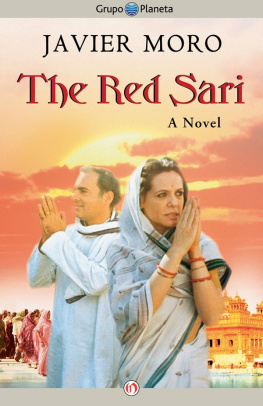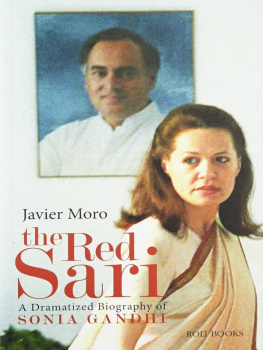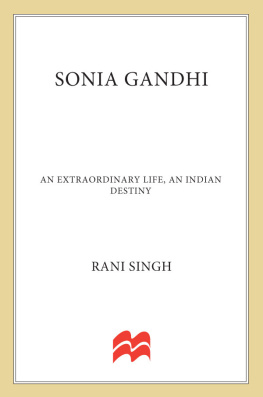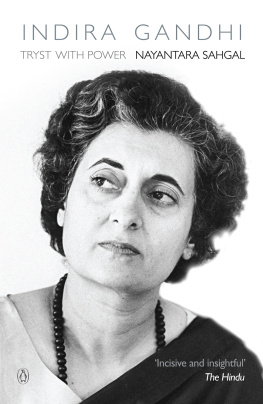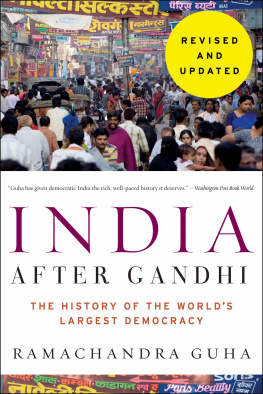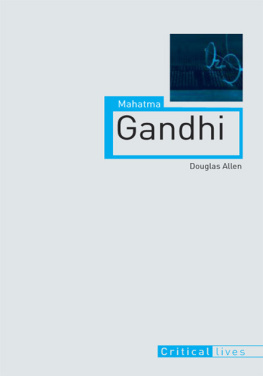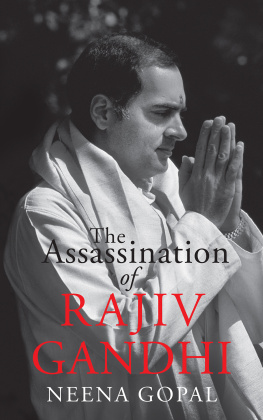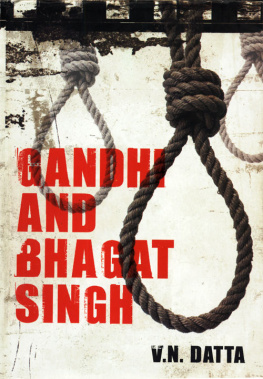The Red Sari
A Novel
Javier Moro
Translated by Peter J. Hearn

Disclaimer
This is a book based on the story of Sonia Gandhi and the Nehru family. Neither Sonia Gandhi nor any member of her family has provided information or has collaborated in this book.
You and this book were born together,
and I dedicate it to you,
Olivia
OPENING
Lead me from darkness into light, from death to immortality.
Vedic prayer
1
New Delhi, May 24th, 1991.
Sonia Gandhi simply cannot believe that the man she loves is dead, and she will no longer feel his caresses or the warmth of his kisses. She will never again see that sweet smile that one day swept her off her feet. It has all been so quick, so brutal and so unexpected that she still cannot take it in. Her husband was killed in a terrorist attack two days ago. His name was Rajiv Gandhi; he has been Prime Minister, and he was about to be Prime Minister again, according to the polls, if his electoral campaign had not been cut short in such a tragic way. He was 46 years old.
Today the capital of India is preparing to say farewell to the remains of this illustrious son of the nation. The coffin containing the body is lying in the great hall of Teen Murti House, the palace residence where he spent his childhood when his grandfather, Jawaharlal Nehru, was Prime Minister of India. It is a small colonial palace, surrounded by a park with large tamarinds and flame trees, their red flowers standing out against a lawn that is yellow from the heat. Originally designed to be the home of the Commander-in-Chief of the British forces, after independence it became the residence of the leader of the new nation, India. Nehru moved in, with his daughter Indira and his grandchildren. The gardeners, cooks and other members of staff, who, together with thousands of fellow Indians, have come today to pay tribute to their assassinated leader, find it hard to believe that the body lying in state here is that of the little boy who used to play hide and seek in those rooms as big as caves, with ceilings six metres high. It seems to them that they can still hear the echoes of his laughter when he chased down those long corridors after his brother, while his grandfather and mother received some head of state in one of the rooms.
A large photo of Rajiv with a white garland round it stands on the coffin which is covered in a yellow, white and green flag, the nations colours. His bright smile is the last image the thousands of people filing through Teen Murti House, in spite of the temperature of 43, take away with them. It is the image that the members of his family will also take away, because the body of this man that women found so handsome has been so badly disfigured that, in spite of their attempts at reconstruction, the doctors have not managed to put the amorphous mass of flesh left by the bomb back into shape. They say that one of them fainted during the attempts to embalm him. So they have simply used cotton wool and bandages, and plenty of ice so he will last until the day of the cremation.
Be careful, please. Dont hurt him, says his widow with a grief-stricken look to the men who come periodically to put in fresh ice, because the heat is increasing inexorably, and the temperature will go on rising until the beginning of July, until the monsoon rains come. Her only consolationthat she could well have ended up the same if she had gone with him, as she so often diddoes not help her because right now she would like to die too. She would like to be with him, always with him, here and in eternity. She loved him more than she loves herself.
Her children are by her side. The younger one, Priyanka, 19 years old, is a tall, dark haired girl who is strong both in character and physically. She has taken charge of the funeral preparations and is very attentive to her mother. She insists that she eat something, but just thinking about food makes Sonia feel sick. She has got through the last two days on water, coffee and lime juice. Her old companion, asthma, which has been with her since she was very small, has reappeared. Two nights ago, when they informed her that her husband had been the victim of a terrorist attack, she had such a violent attack that she almost lost consciousness. Her daughter found her anti-histamines and gave them to her, although she could not comfort her. She is worried that the heat and grief may bring on another attack.
Rahul, the elder, is 21 and has just arrived from Harvard where he is studying. In her son she sees her husband: the same gentle features, the same smile, the same expression of goodness. She looks at him with infinite tenderness. How young he seems to light his fathers funeral pyre, which is the role of the son according to Hindu tradition.
At one oclock in the afternoon, the arrival of three generals, the representatives of their respective armed forces, signals the official start of the State funeral. Just before the soldiers lift the coffin with the help of Rahul and other family friends, Priyanka approaches to caress him, as though she wanted to say goodbye to her father in this way before he starts out on his final journey. Her mother, who has been busy greeting so many personalities, keeps herself a certain distance away, watching the scene with tears in her eyes. She is dressed in a pure white sari, as is customary for widows in India. She has spent more than half her life living here, so she feels Indian. Last February she celebrated her 23rd wedding anniversary with Rajiv having dinner in a restaurant in Teheran, where she was accompanying him on an official visit. She is still very attractive, just as she was at 18, when she met him. Her black hair, streaked with incipient grey, is carefully combed back, tied in a bun and covered by one end of her sari. If they were not swollen with grief, her eyes would be big. They are dark brown in colour, with long, carefully plucked eyebrows. She has a straight nose, plump lips, very white skin and a strong jaw. Today she looks like one of those tragic heroines from an Indian blockbuster movie, although her profile and proud stance evoke a goddess of the Roman pantheon, perhaps because the sari she wears so naturally is similar to the tunic women wore in ancient times. Or perhaps because of her physique. She was born and brought up in Italy. Her maiden name is Sonia Maino, although she is known as Sonia Gandhi, now Rajivs widow.
More than half a million people defy the heat to see the funeral cortge go by on its way to where the cremation will take place, some ten kilometres away, behind the walls that the Mogul emperors erected to protect old Delhi, in splendid gardens on the banks of the River Jamuna. Escorted by five detachments of 33 soldiers, the wheeled platform bearing the coffin decorated with marigolds is pulled along by a military truck, also covered in flowers. On the seats inside it are the heads of the General Staff. After it come the cars carrying the family. Some of the onlookers manage to see Sonia remove her enormous sunglasses in order to wipe her face with a handkerchief and, with a trembling hand, dry her tears. The cortge heads down Rajpath Avenue, bordered with well-tended gardens where generations of city dwellers have strolled in the shade of its huge trees, mostly jambuls over a hundred years old, with black fruit like figs. Most of the trees were planted against the heat, when the English decided to make Delhi into the new capital of the Empire, to the detriment of Calcutta. They built a pleasant garden city with wide avenues and grandiose views, as was appropriate to a capital of the Empire. The vista down the centre of Rajpath, overflowing with a crowd carrying orange flowers, the holy colour for Hindus, brings memories to Sonia of a past of happiness, so close in time and yet so far away now On this same avenue, opposite India Gate, the local version of the Arc de Triomphe in Paris, she stood on January 26th, the national holiday, watching the military parade with Rajiv How many times has she watched it? Almost as many as the years she has been in India. A whole lifetime. A lifetime coming to an end.

